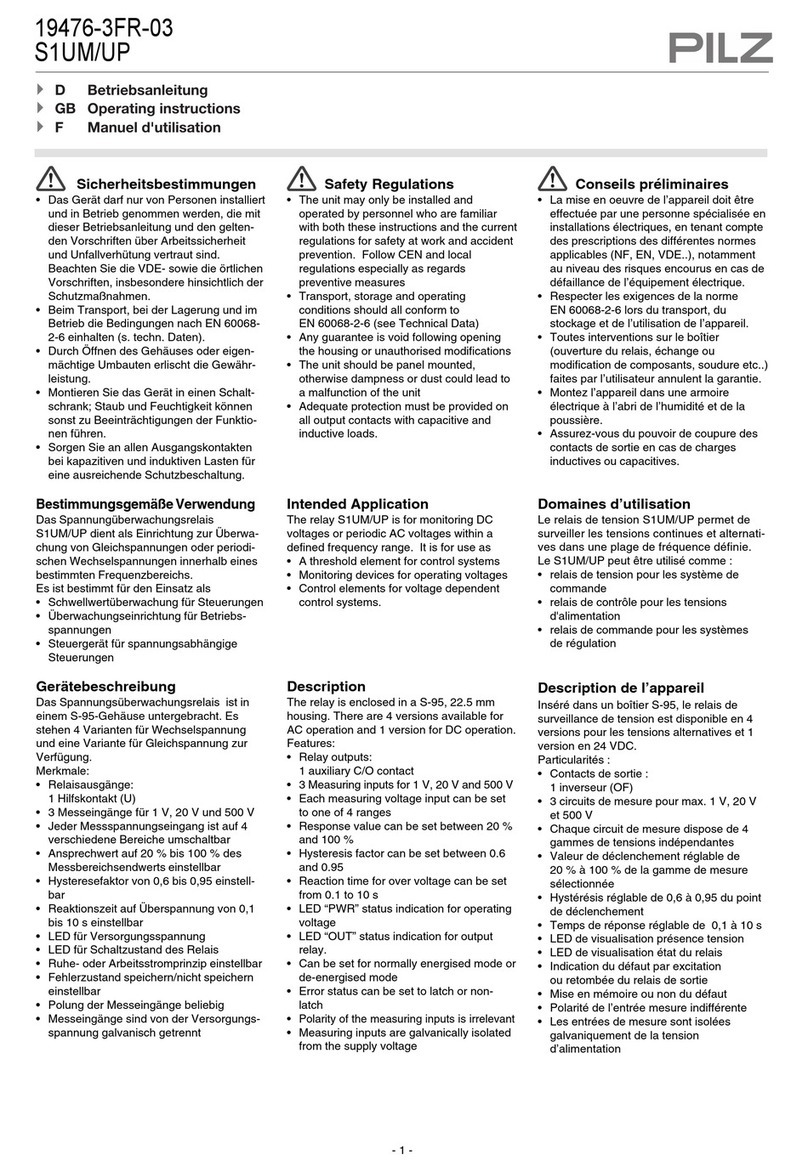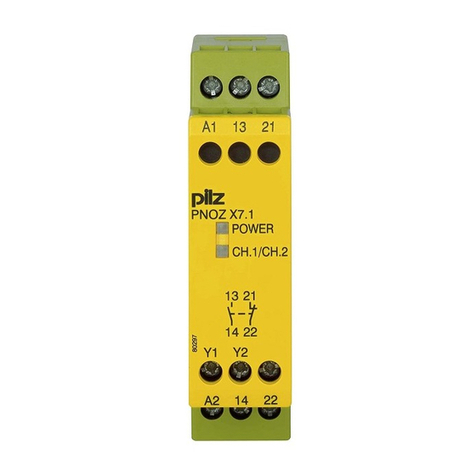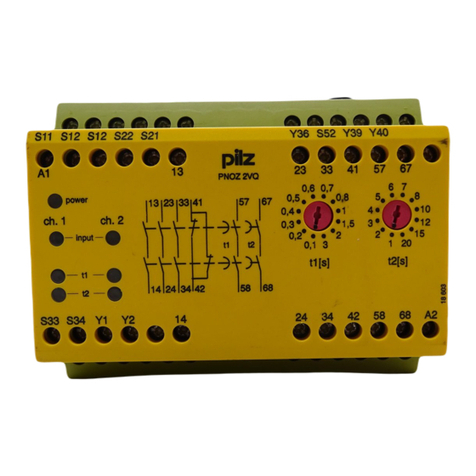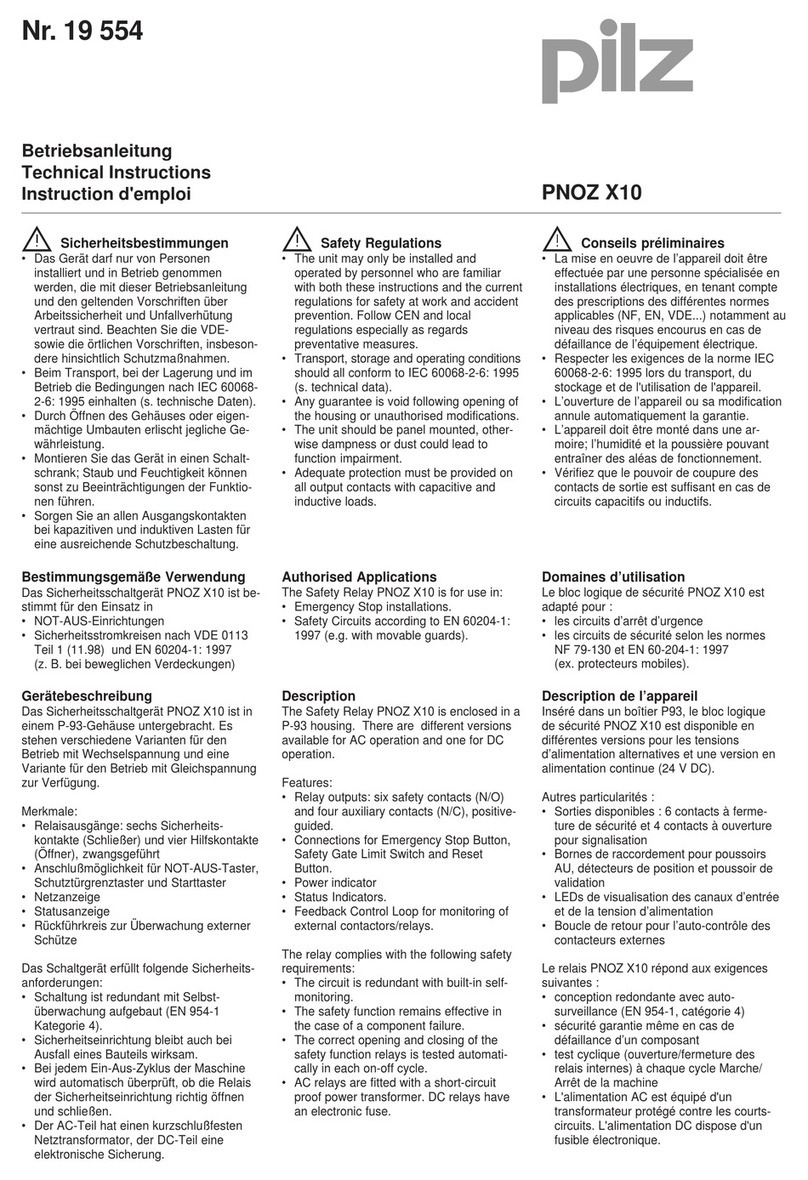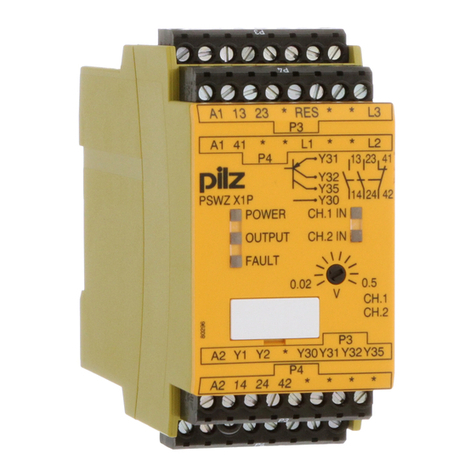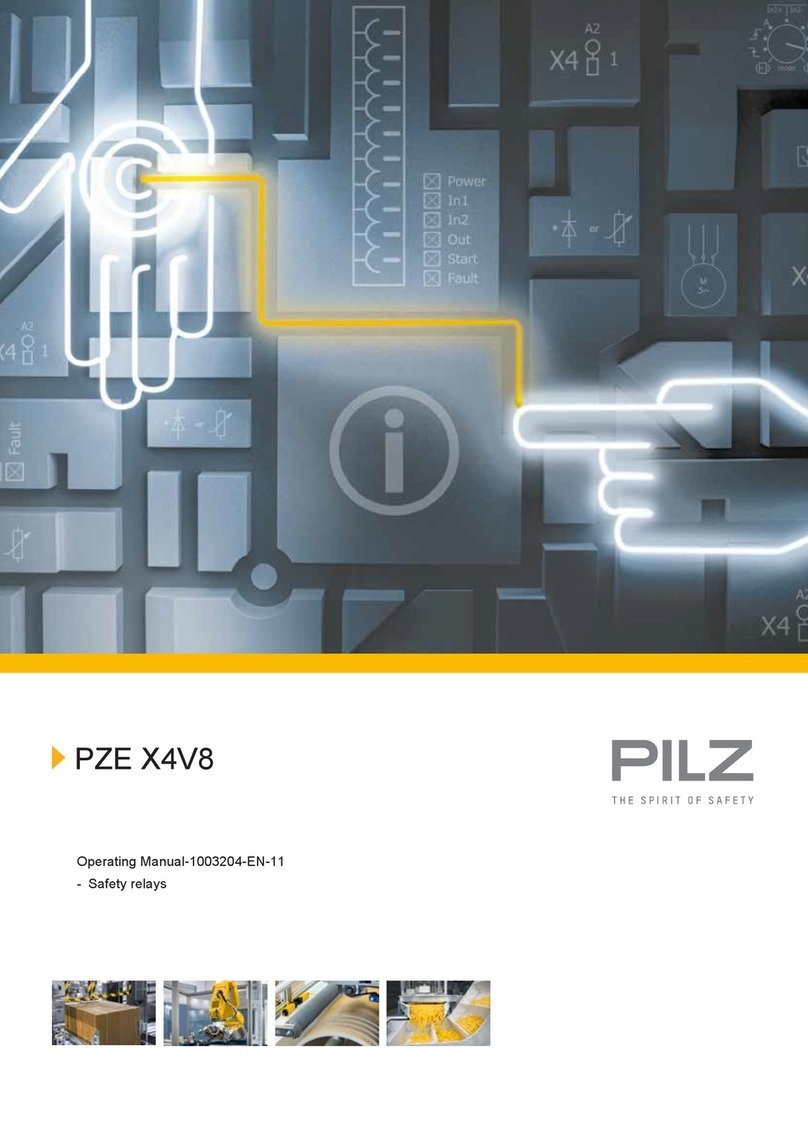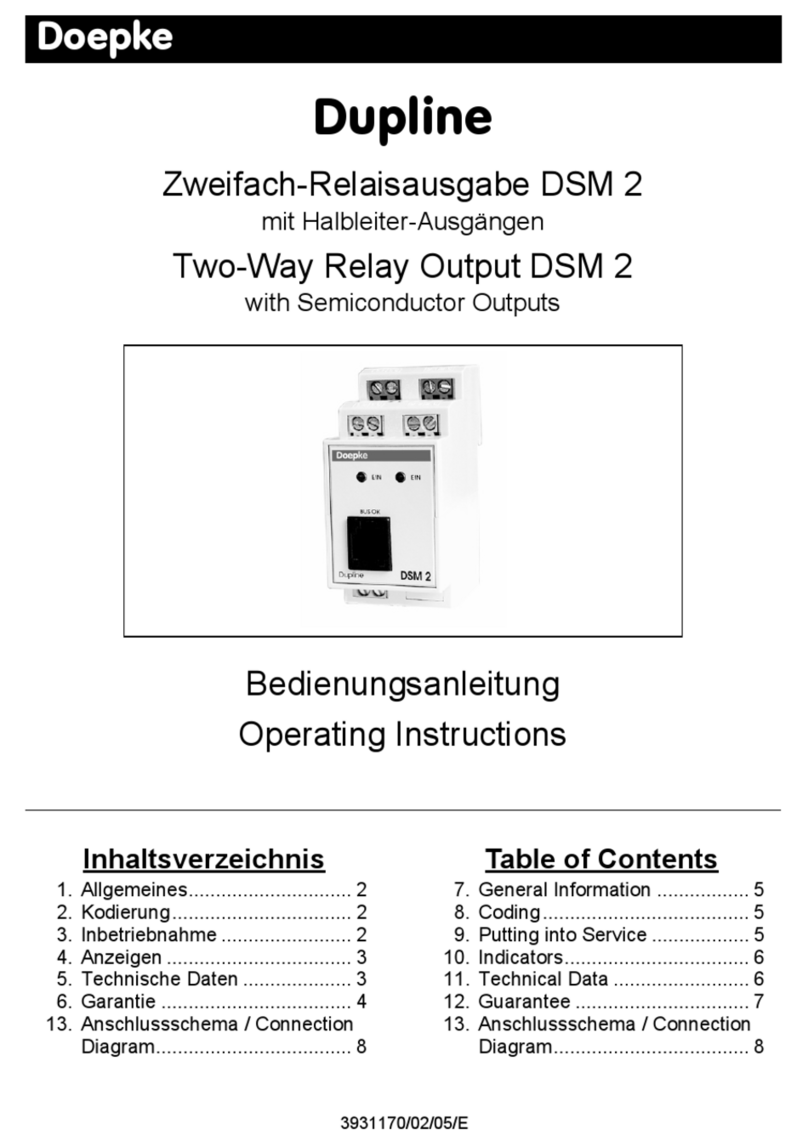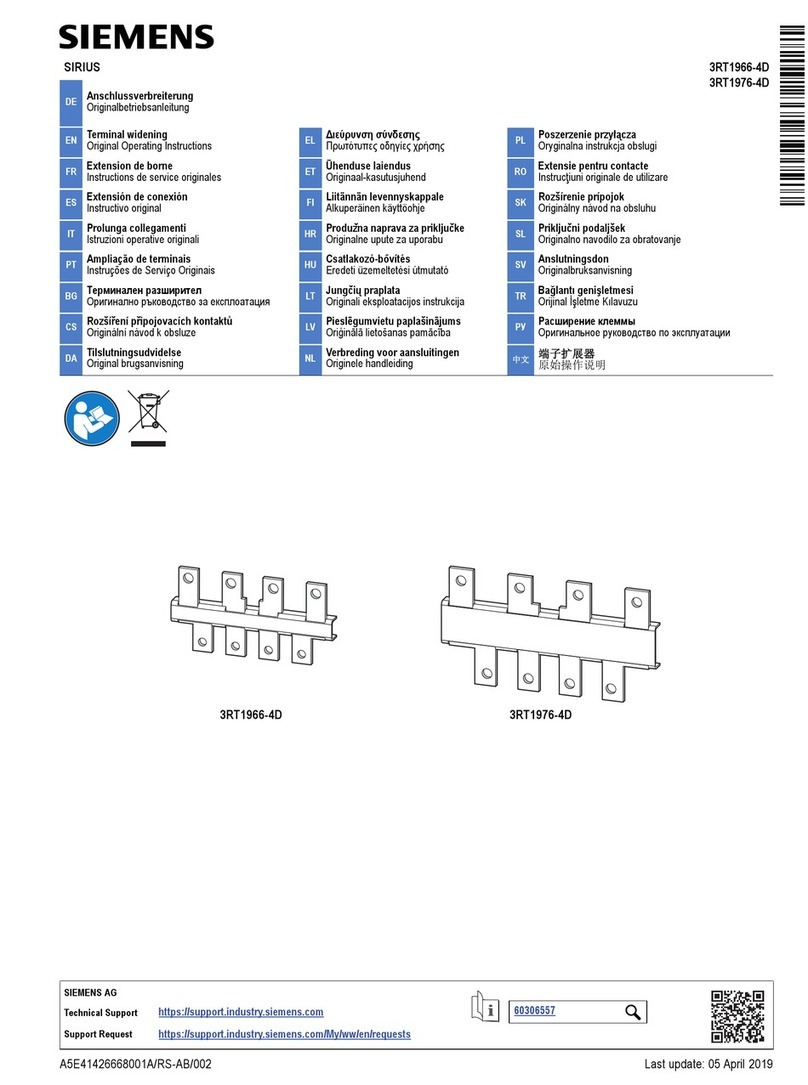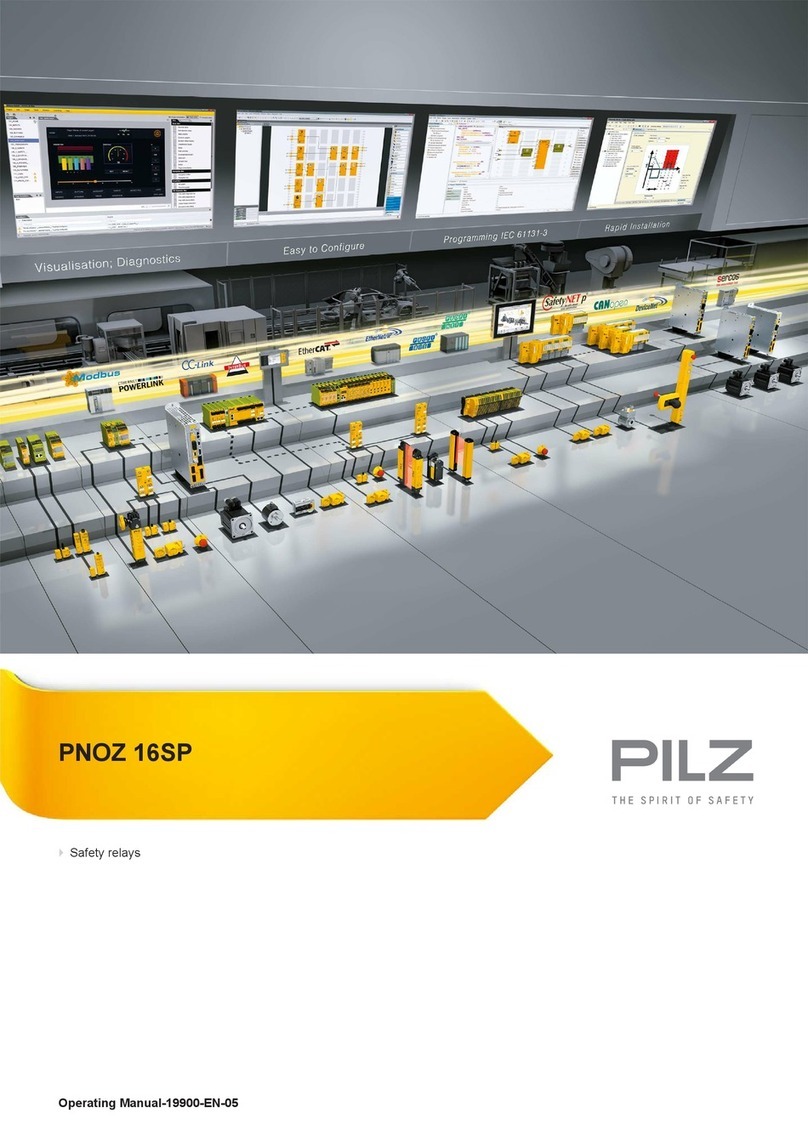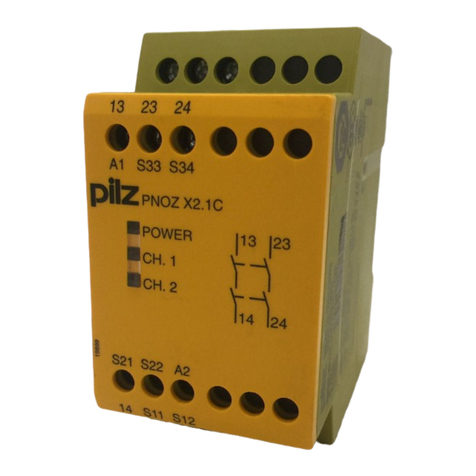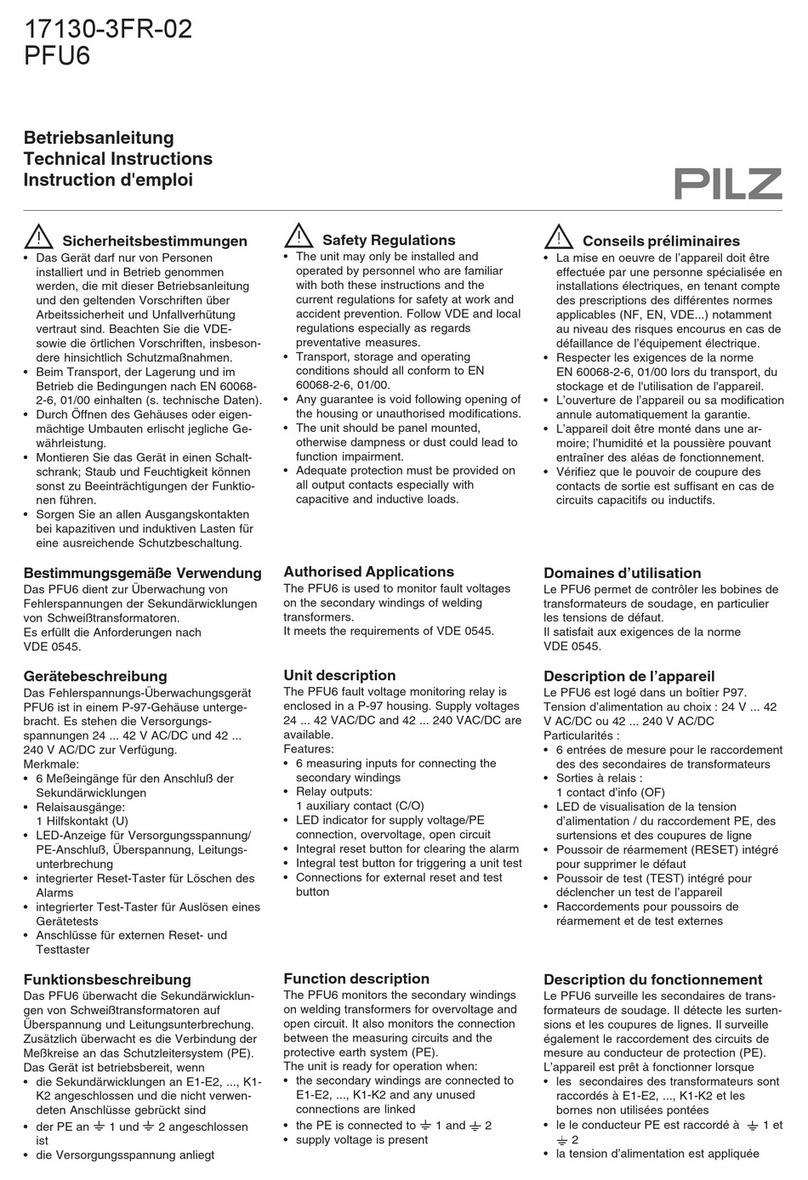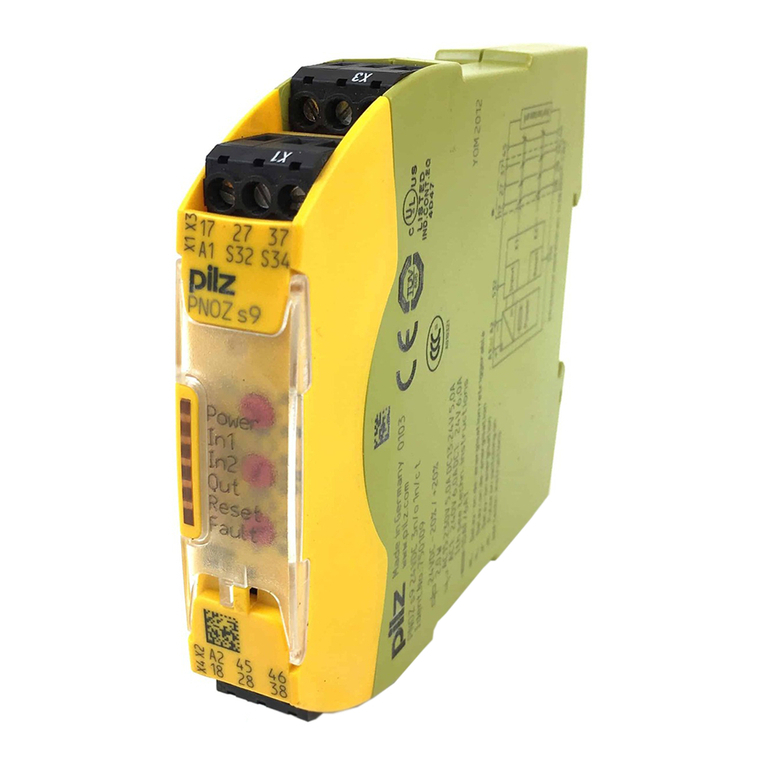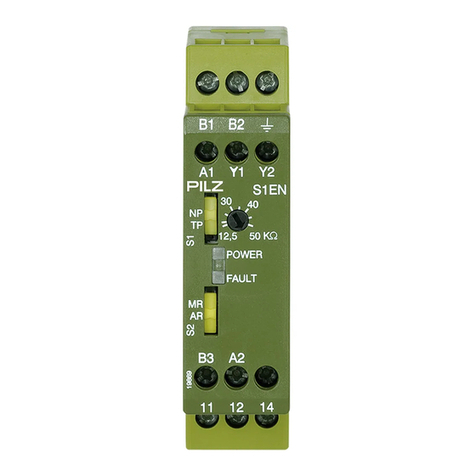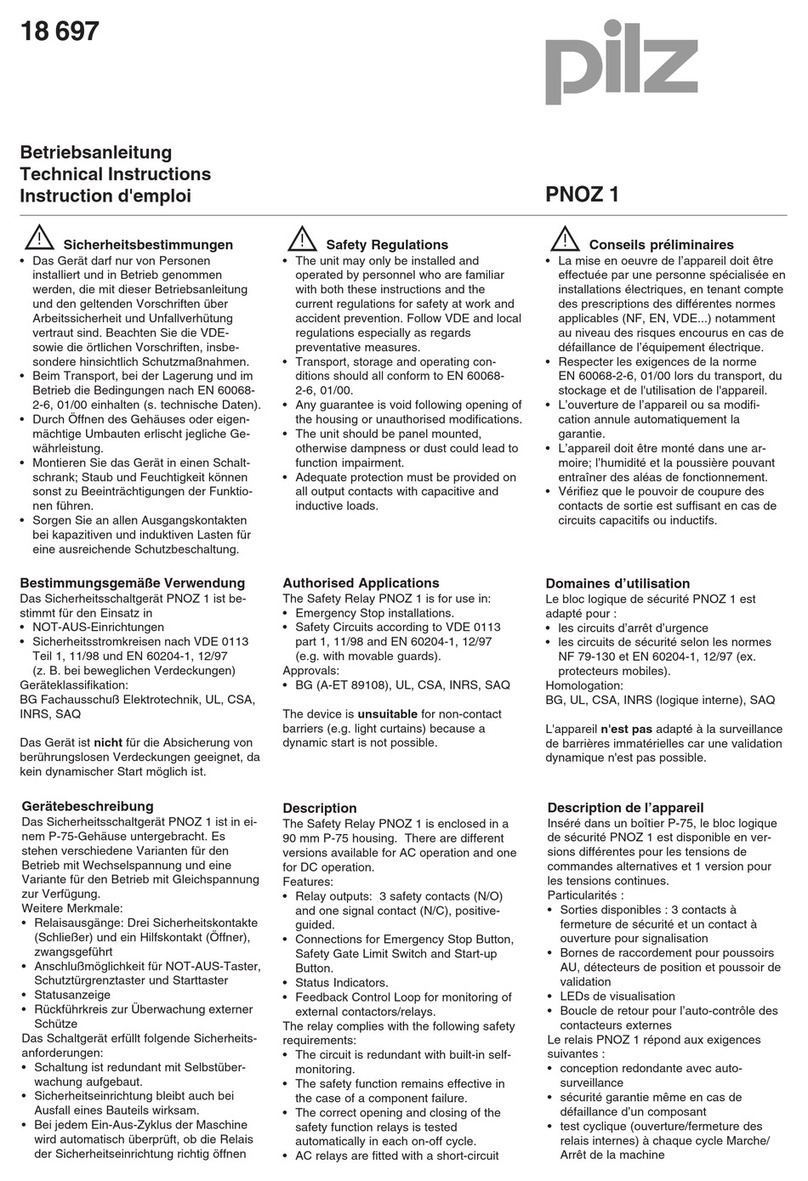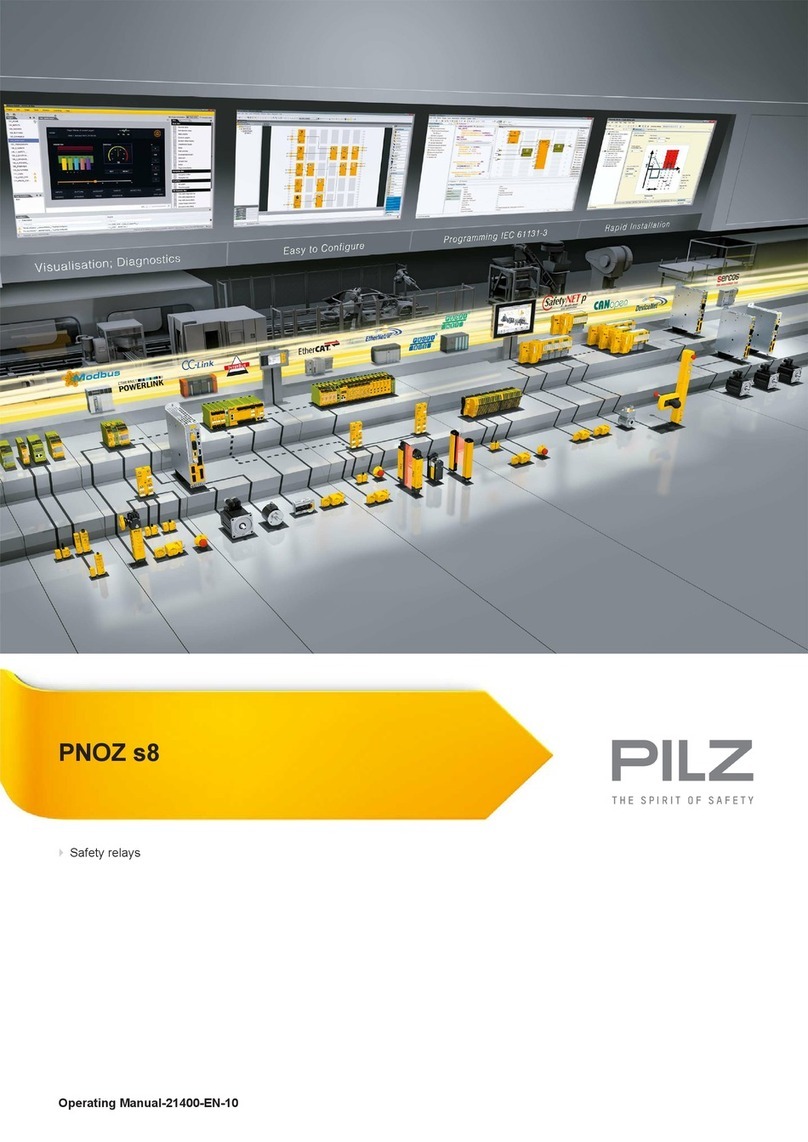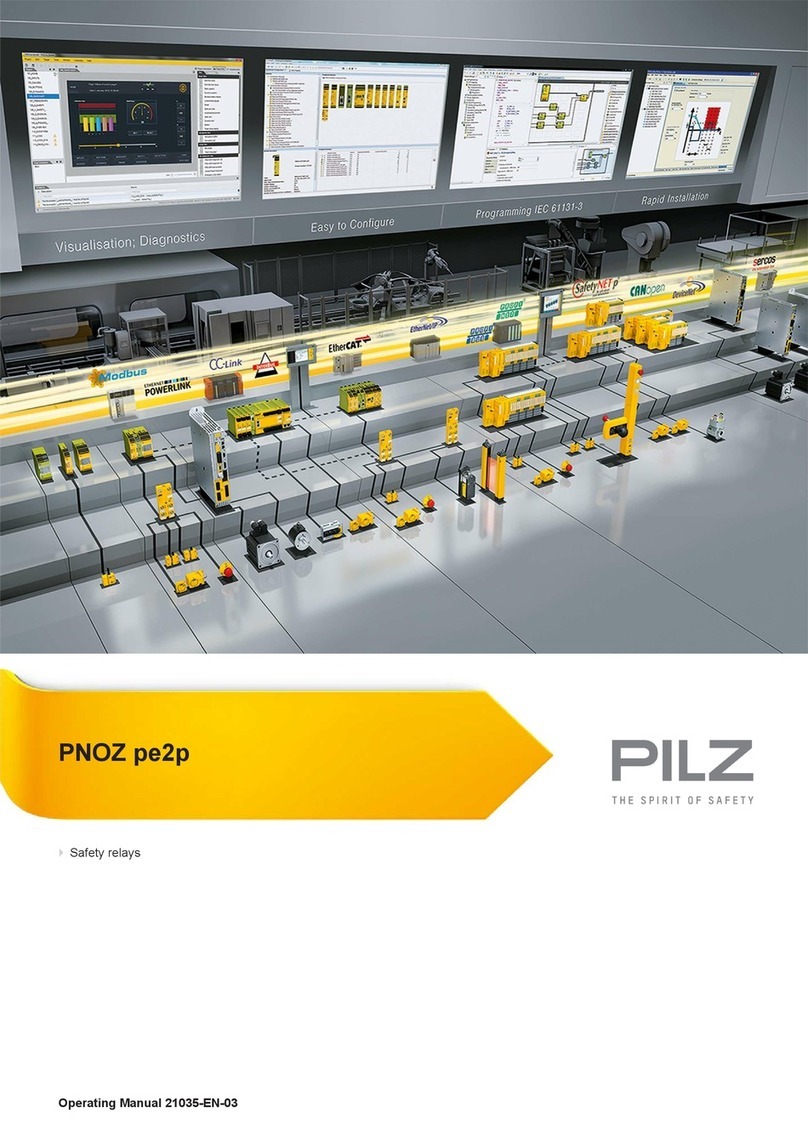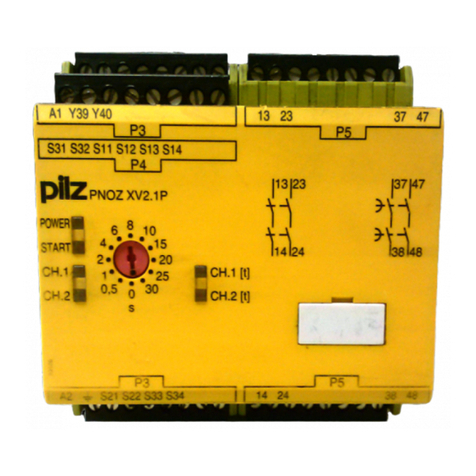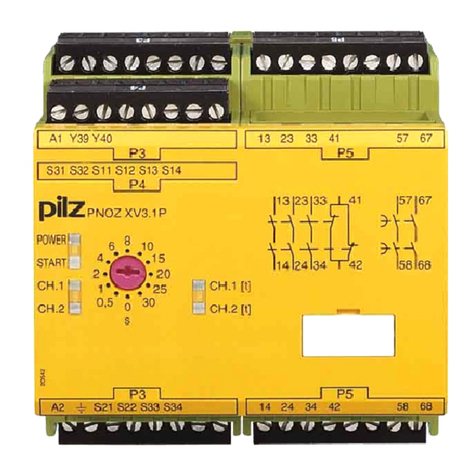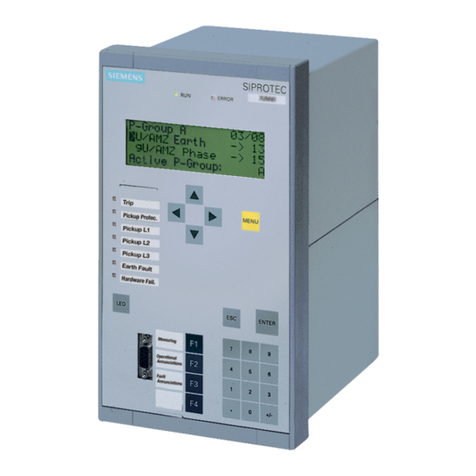
Contents
Operating Manual PNOZ e1p
21242-EN-13 | 3
Introduction ............................................................................................................................5
Validity of documentation.......................................................................................................... 5
Using the documentation .......................................................................................................... 5
Definition of symbols................................................................................................................. 5
Safety ...................................................................................................................................... 6
Intended use ............................................................................................................................. 6
Safety regulations ..................................................................................................................... 6
Safety assessment ................................................................................................................... 6
Use of qualified personnel ........................................................................................................ 7
Warranty and liability ................................................................................................................ 7
Disposal .................................................................................................................................... 7
Unit features ...........................................................................................................................8
Safety features ....................................................................................................................... 8
Block diagram/terminal configuration ................................................................................. 8
Function description ............................................................................................................. 9
Operating modes ...................................................................................................................... 9
Selecting sensors ..................................................................................................................... 10
Installation ..............................................................................................................................10
Wiring ......................................................................................................................................11
Preparing for operation ......................................................................................................... 12
Supply voltage .......................................................................................................................... 12
Input circuit ............................................................................................................................... 12
Start circuit................................................................................................................................ 13
Logic connection between several units ............................................................................. 14
Operation ................................................................................................................................15
Status indicators ....................................................................................................................... 15
Faults – Interference .............................................................................................................. 16
Dimensions ............................................................................................................................21
Technical details ....................................................................................................................21
Safety characteristic data ......................................................................................................... 25
Remove plug-in terminals ..................................................................................................... 26
